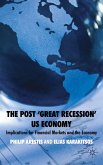This monograph is probably one of the most laborious efforts to depict the dynamic reconfiguration of the US economy around the 1990s. The progress of the US economy in that time was not a simple piece of a macroeconomic business cycle, but was accompanied by industrial dynamics led by IT. Thanks to the latter aspect, the US economy presented a remarkable rate of economic growth without inflation. Innovations driven by IT created a numerous number of new businesses, while keeping manufacturing costs even lower not only in the IT sector but also in IT-using sectors. This trickling- down effect of productivity gains is best captured by inter-industry input-output (IO) analysis. Inter- industry IO analysis shows the chain reactions of a productivity gain throughout industries by tracing the flow of intermediate inputs: forward linkages initiated by a supplying industry and backward linkages induced by a demanding industry. Drawing on the IO toolkit, this monograph successfully reveals the industrial sources and inter-industry conveyor belts underlying the splendid productivity growth of the US economy around the 1990s.
Bitte wählen Sie Ihr Anliegen aus.
Rechnungen
Retourenschein anfordern
Bestellstatus
Storno








